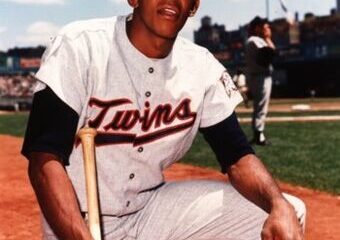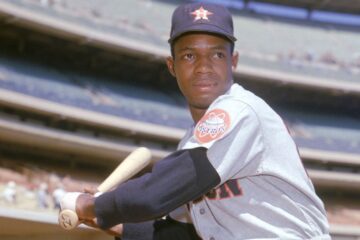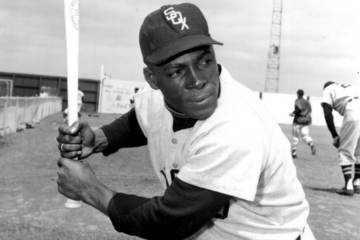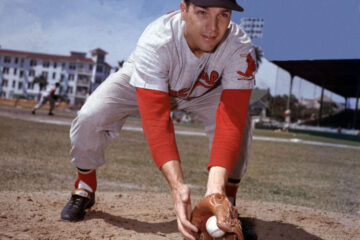The Hall of Fame Index: Who is the least fit catcher in the Hall of Fame?
Since we appear to have all of the time in the world, I thought I would indulge myself and reading audience to some Hall of Fame analysis. Essentially, the governing concept of my book “The Hall of Fame Index Part II” is not whether players should or should not be in the Hall of Fame necessarily, but who is the most fit. So, in order to introduce the reading audience to this analysis I am answering a different question today. Which player in the Hall of Fame is the least fit? Well, in order to do that we have to break the players down by their primary position. Today we are looking at catchers.
In order to do this we will be going through a series of tests. The first two come directly from the index itself. We add up career and peak value from three different statistical sources (baseball-reference WAR, fangraphs WAR, and win shares divided by five). We do the same with peak value which is defined as the top ten consecutive seasons of a player’s career. Following the index, we look at offensive numbers, fielding numbers, and finally at their BWAR MVP points. The book covers every Hall of Famer selected by the writers. So I will focus on those selected by the Veterans Committee.
| BWAR | FWAR | WS/5 | Total | |
| Ted Simmons | 50.3 | 54.2 | 63.0 | 167.5 |
| Buck Ewing | 47.9 | 48.1 | 48.2 | 144.2 |
| Roger Bresnahan | 42.9 | 39.6 | 46.2 | 128.7 |
| Ernie Lombardi | 39.5 | 41.9 | 43.6 | 125.0 |
| Ray Schalk | 33.0 | 22.4 | 38.2 | 93.6 |
| Rick Ferrell | 31.1 | 27.2 | 41.2 | 99.5 |
Many of you might be thinking this looks very similar to JAWS. It does and there is no getting around that. The index has been configured in some form for over a decade, so these models were developed at similar times independently. I have a great deal of respect for Jay Jaffe, so I won’t say anything negative about his system. I chose this model because it includes multiple platforms so we could get a cross-section of opinion on each player. As you can see, there are some significant differences depending on the platform.
Both JAWS and the index include a peak value component. JAWS uses seven years where the index uses ten. Again, there are good reasons to do both, so I’m not casting any aspersions. I chose ten because that is the number of years needed to get on the Hall of Fame ballot and it provides more data. There are just as many good reasons for using seven. The last major difference is that Jaffe averages career and peak value. I add them. Doing so creates more separation. That’s ultimately what I’m after. I want to show gaps between players which helps us determine who is fit and not fit.
| BWAR | FWAR | WS/5 | Peak | Index | |
| Simmons | 44.7 | 48.6 | 48.0 | 141.3 | 308.8 |
| Ewing | 36.9 | 36.9 | 35.8 | 109.6 | 253.8 |
| Bresnahan | 36.2 | 34.4 | 38.0 | 108.6 | 237.3 |
| Lombardi | 28.0 | 29.1 | 30.8 | 87.9 | 212.9 |
| Schalk | 29.2 | 20.5 | 32.4 | 82.1 | 175.7 |
| Ferrell | 23.8 | 20.9 | 28.2 | 72.9 | 172.4 |
This data answers a number of questions and raises more questions at the same time. It shows that Simmons waited far too long to get the call. More importantly, it demonstrates that the question of whether “Player A is a Hall of Famer?” is completely inadequate. Where do we draw the line? It is far from me to say any player is a mistake outright because we don’t know where the line should be drawn. So, again, we are looking for gaps in data. If we are looking for the least qualified, then that rests with Ray Schalk and Rick Ferrell. That being said, answering that question definitively on the basis of three wins seems capricious, so let’s look at offense, fielding, and MVP points.
| OPS+ | Rbaser | OW% | wOBA | |
| Simmons | 118 | -16 | .582 | .347 |
| Ewing | 129 | 25 | .661 | .372 |
| Bresnahan | 126 | -3 | .666 | .373 |
| Lombardi | 126 | -11 | .635 | .376 |
| Schalk | 83 | 3 | .434 | .321 |
| Ferrell | 95 | -2 | .503 | .353 |
Naturally, it makes some sense to take a look at each of these statistics individually. OPS+ is an aggregate statistic that compares a player’s OPS (on base plus slugging) and compares it to the league average. Strictly speaking, it asks what the league average player would produce in that same environment (including home ballpark). Rbaser is similar except average is represented as zero instead of 100. It calculates not only stolen bases but all baserunning events. Offensive winning percentage asks what a team’s record would be if all nine hitters hit exactly like that player and the team had an average pitching staff and average team defense. Weighted On Base Average is similar to OBP, but includes some slugging elements. Unlike the other three, it does vary somewhat on the era.
When we look at the above numbers we might come away underwhelmed by Simmons. However, he played in the late 1960s through the early 1980s. That was a relatively depressed offensive period. That would explain why a Ferrell came away with a superior wOBA even though historically he was not a superior hitter. All in all, these numbers help explain part of the reason why there was a gap between the top four and the bottom two.
| Rfield | DWAR | TZCatcher | DWS | |
| Simmons | -34 | 5.2 | -8 | 73.0 |
| Ewing | 78 | 9.7 | 58 | 55.4 |
| Bresnahan | -3 | 6.5 | -3 | 53.1 |
| Lombardi | -82 | 3.8 | -21 | 52.3 |
| Schalk | 90 | 18.3 | 46 | 97.4 |
| Ferrell | 39 | 9.4 | -3 | 82.4 |
We start with Rfield and total zone runs. They are similar metrics. The first comes from baseball-reference and similar measures how good the fielder was in comparison with the average fielder at that position. Zero represents average. Total zone runs are calculated in a similar way, but Fangraphs is more transparent in how they are broken down by position. Some players (notably Simmons and Ewing) played different positions, so we want to see what they did exclusively as catchers. Both DWAR and defensive win shares show what the player did in comparison with the typical AAA player. DWAR measures that against the entire baseball universe where win shares goes against that specific position.
The biggest mistake anyone can make here is in trying to combine these numbers. They all mean different things. Most of the time we see the same thing and when we do we can assume that this represents reality. Schalk was an exceptional defensive catcher. Lombardi not so much. The rest come somewhere in between. Just like with hitting, it is a comparative analysis, so this isn’t to say anyone is a bad hitter or a bad fielder. They are just comparatively not as good.
| Top 10 | Top 5 | MVP | Points | |
| Simmons | 5 | 0 | 0 | 15 |
| Ewing | 5 | 1 | 0 | 20 |
| Bresnahan | 3 | 1 | 0 | 14 |
| Lombardi | 1 | 0 | 0 | 3 |
| Schalk | 1 | 0 | 0 | 3 |
| Ferrell | 0 | 0 | 0 | 0 |
The math is very simple and most of you have already figured it out. Top ten finishes get three points a piece. Top five finishes get five points a piece and MVPs get ten points a piece. These are the finishes of BWAR amongst position players in those particular seasons. Normally, we would also compare the actual BBWAA voting, but Ewing did not get the benefit of that. Bresnahan and Schalk’s opportunities were limited because they did not have MVPs in some seasons and in others the rules for voting we far different than now.
Adding in the offensive, defensive, and MVP points provides some depth to our discussion. Schalk narrowly defeats Ferrell in the index, but he has one top ten season to his credit where Ferrell does not. He scores better on the fielding end by a considerable margin and does not trail him as much as we might think offensively. Had there been Gold Gloves in his time, he might have won more than a few. That at least provides some basis to make him stand out from the rest of the catching universe.
Conversely, Ferrell was essentially an average player overall that managed to hang on for nearly two decades. This isn’t to demean average performers. Every team needs a few of those guys if they want to get far. Yet, it is hard to justify putting in an average player in the Hall of Fame. Of course, we aren’t calling him a mistake here. We are simply saying he is the least fit for being in the Hall of Fame.





